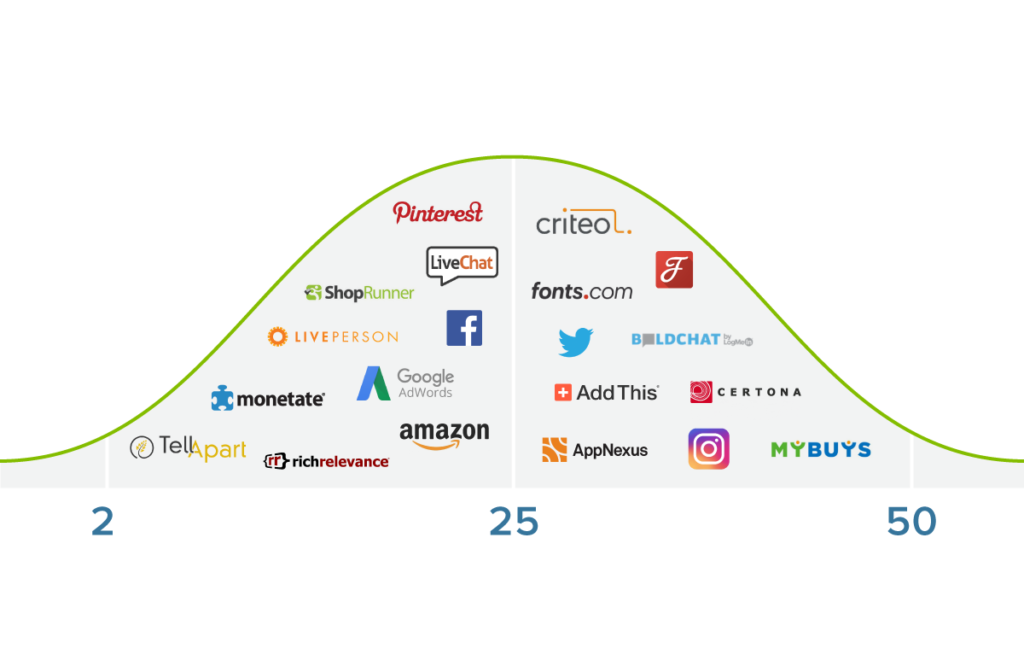
Don’t Hold Back: The Case for 3rd Party eCommerce Applications
The best eCommerce shopping experiences today aren’t built on one single technology. They can’t be. Customers expect a shopping experience that connects with them. An experience that is easy, personalized, and seamless across all locations and devices, and can be shared with friends and family. And the only way to deliver this is using 3rd party applications and services.
Want a full inventory of your 3rd party technologies complete with errors? Get a free website evaluation with a YOTTAA performance expert today.
However, many eCommerce teams try to limit the number of 3rd parties integrated into their website. Why? They are concerned about losing control over the experience, losing control over website performance, and becoming too dependent on outside vendors. The big question many retailers ask today is : “Am I using too many 3rd party applications on my website?”
The answer is simple. You’re probably not using enough.
3rd party technologies have revolutionized eCommerce with the average site using over 30 third party applications to optimize end user experience with some exceeding fifty. Let’s review some of the most common uses for 3rd party applications today.

- Personalization & Recommendations – Shoppers demand personalized experiences. If they aren’t presented with an experience that reflects their history and interests, they will go to a website that does. Personalization technologies specialize in turning customer intelligence data into an actionable personalized experience. Recommendation technologies use machine learning to propose alternative or complimentary products based on a shopper’s behavior and expressed interests. Companies like Reflektion, Tellapart, Certona, Magentic, and Monetate make personalized shopping experiences easy by doing the heavy lifting on their servers and returning personalized results to your web pages and providing recommendations that add new SKUs to shopping carts and introduce higher margin products that the shopper might have missed.
- Social Media – Retailers have quickly learned that connecting with shoppers through social media channels such as Facebook, Pintrest, and Instagram helps loyal customers share their purchases and good experiences, which in turn brings traffic back to the site. It’s another step in building a stronger, more personal relationship with your shoppers. As a result, social media tags are now a standard feature on retail websites.
- Product Reviews – Product reviews go hand in hand with social media – shoppers want to understand the opinion and experience of others before making a purchase. This increases customer satisfaction and conversion rates because customers feel more confident about making an online purchase. Technologies like PowerReviews, Bazaarvoice, and Yotpo help retailers collect, manage, and publish reviews quickly.
- Live Chat – When a shopper is in-store and they have a question, they simply find an associate, ask the question and get an answer. Live Chat technology gives online shoppers a similar ability to quickly ask questions or find additional information. Leaders like LiveChat, LivePerson, BoldChat, and many more can get your site up and running with live responses. This investment builds brand loyalty and higher customer satisfaction ratings.
- Advertising Technology – Introducing ad tech into your eCommerce site to track and re-target visitors will maximize your investments in Google and Amazon. It will also increase the likelihood of drawing your target customer to your website. Leading providers like Criteo, Google Ads, Amazon Ad, AppNexus, and many others can help retailers manage and optimize advertising quickly with minor additions to your website that don’t impact the experience, but greatly enhance the effectiveness of your advertising efforts.
By taking advantage of third party technologies, retailers are able to rapidly deploy new capabilities into their websites that customers love, while focusing their development teams on the overall user experience strategy. And these capabilities help build a stronger and more profitable relationship with your customers.
But when all is said and done the big winner is the shopper. Third party applications deliver capabilities that make it easier for customers to find the products they want, make them more confident about their purchasing decisions, and make it easier for them to purchase and share their experience with their networks. And all of this increases customer satisfaction across the board.
So, are you still concerned about the proliferation of 3rd party tags on your website? Don’t be. The value they deliver far outweighs the cost, and 3rd party application sequencing technologies (such as Yottaa) can help you control their impact on the performance of your website. Focus on the needs of your customer and connecting them with your brand, rather than fighting to stay under an arbitrarily limit on third party eCommerce applications on your site.
Want a full inventory of your 3rd party technologies complete with errors? Get a free website evaluation with a YOTTAA performance expert today.
